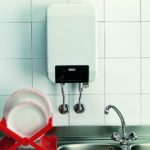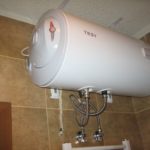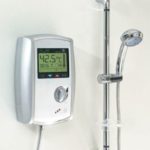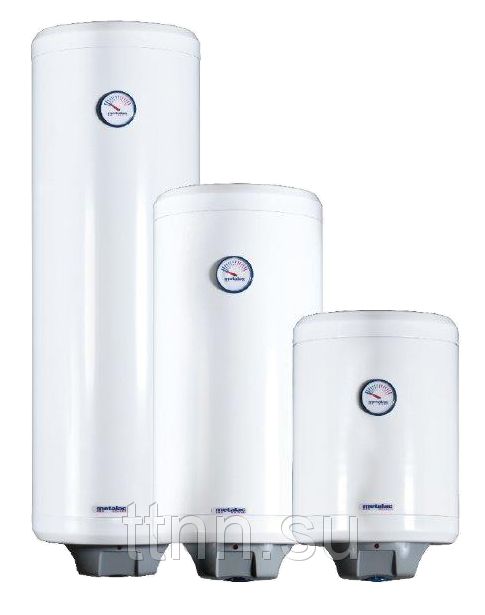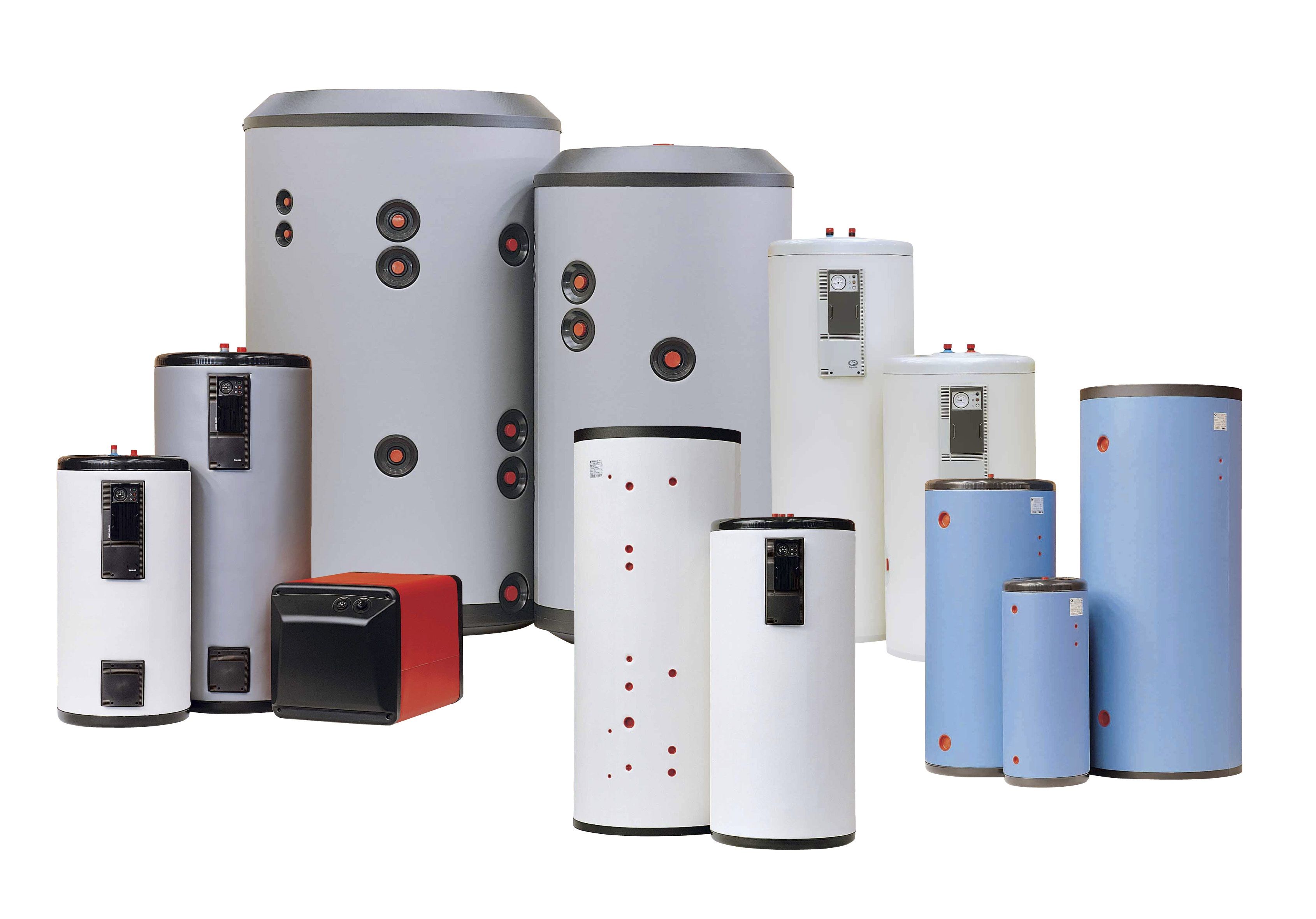What types of water heaters are there?
Despite the fact that we live in the age of information technology, interruptions in hot water in private and apartment buildings are not a rare occurrence. At the time of pressure testing, water heaters come to the rescue. There are a great variety of water heating models on the market. How not to get confused in the choice and buy a device that will last for many years?
The content of the article
Types of water heaters
Water heating equipment is divided into several types. Depending on the energy source, gas and electric appliances are distinguished. In addition, there is a classification according to the heating method. Here we should highlight instantaneous and storage water heaters. Let's look at each type in detail.
Cumulative
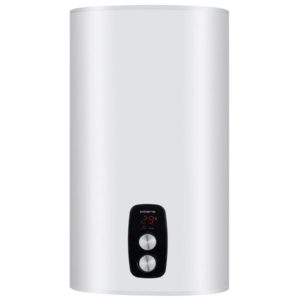 The most popular on the market are storage water heaters. This is due to the ease of use, high power of the device, wide choice of tank volume, and variety of sizes. You can install such a boiler yourself or seek help from specialists. There are horizontal and vertical installations. It is recommended to install tanks with a volume of more than 100 liters on the floor.
The most popular on the market are storage water heaters. This is due to the ease of use, high power of the device, wide choice of tank volume, and variety of sizes. You can install such a boiler yourself or seek help from specialists. There are horizontal and vertical installations. It is recommended to install tanks with a volume of more than 100 liters on the floor.
All storage models are equipped with a thermostat, which helps maintain the required water temperature set by the consumer. The heating rate depends on the volume of the tank.So, in a 150-liter water heater it will take 4.5-5 hours to warm up the water. However, some models provide an accelerated type of warm-up, which helps reduce the time to 3.5 hours. But, in this case, energy consumption increases, so it is advisable to use the accelerated function only in exceptional cases. Since storage water heaters operate silently, they can be left turned on for the entire period of pressure testing. You won't even notice that the device is working, and hot water will flow from the tap without interruption.
When purchasing a tank of this type, you should pay attention to the anti-corrosion treatment of the internal tank. Special products applied to the walls will help extend its service life by several years.
A significant disadvantage of storage water heaters is their large dimensions. For example, a 30-liter model reaches 50–55 cm in height and 36–40 cm in width, a 100-liter tank reaches a height of 100-110 cm. Such dimensions do not allow the device to be placed in small kitchens and bathrooms.
IMPORTANT! If the water pressure in the water supply system is more than 6 atmospheres, an additional reducer must be installed in the electrical storage device.
Flow-through
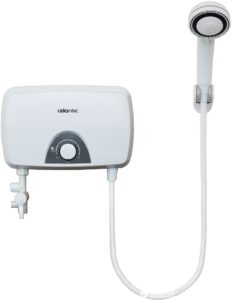 Flow-type models have gained their popularity due to the rapid heating of water. Unlike a storage device, a flow-through tank heats immediately when water enters, which helps save time. Power ratings range from 3 to 27 kW. For premises in an apartment building, the optimal power is no more than 12 kW, otherwise a three-phase power supply will be required, which entails replacing the wiring in the apartment.
Flow-type models have gained their popularity due to the rapid heating of water. Unlike a storage device, a flow-through tank heats immediately when water enters, which helps save time. Power ratings range from 3 to 27 kW. For premises in an apartment building, the optimal power is no more than 12 kW, otherwise a three-phase power supply will be required, which entails replacing the wiring in the apartment.
The advantage of the model is its light weight and compactness. For example, a 30-liter unit is only 35-40 cm high and does not exceed 30 cm in width. Such dimensions allow you to install a water heater not only in the bathroom, but also in the kitchen, directly above the sink.
A significant drawback is that the required voltage is 380V, and the standard voltage in apartment buildings is only 220V. Therefore, it is advisable to install instantaneous electric water heaters in a private home. To do this, it is enough to obtain permission to connect the required voltage.
IMPORTANT! Connecting a flow-type device to an electrical network with a voltage of 220 V will lead to a short circuit of the system and its breakdown.
Electrical
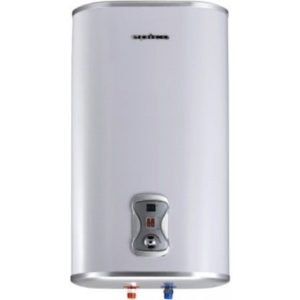 Both instantaneous and storage water heaters powered by electricity are the most private choice of consumers. There are also liquid-fill electrical appliances, which are often used in dachas, and supply-storage appliances, in which water can be supplied from a storage tank or using a heating element (heating element). The disadvantages of electric boilers include:
Both instantaneous and storage water heaters powered by electricity are the most private choice of consumers. There are also liquid-fill electrical appliances, which are often used in dachas, and supply-storage appliances, in which water can be supplied from a storage tank or using a heating element (heating element). The disadvantages of electric boilers include:
- affordable price;
- ease of installation and use of the device;
- laconic design;
- compact dimensions.
Among the disadvantages, consumers note the high power consumption of the device, the lack of corrosion protection in inexpensive models, and the long wait for water heating in storage devices.
IMPORTANT! Experts recommend installing a separate automatic machine for the water heater, this will avoid power outages.
Gas
Gas water heaters, just like electric ones, are divided into two types:
- flow-through;
- cumulative.
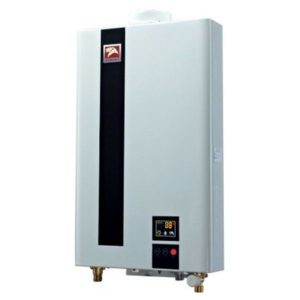 In apartments or private houses with a central heating system (CHS), installing a gas flow-through appliance is the optimal solution to the hot water problem. For uninterrupted operation of the boiler, the energy released when burning gas from a gas burner is required. The power of the gas appliance varies from 20 to 30 kW, which is an advantage. In addition, the cost of gas in Russian cities is lower than the cost of electricity, so if hot water is often turned off, gas models will help save money.
In apartments or private houses with a central heating system (CHS), installing a gas flow-through appliance is the optimal solution to the hot water problem. For uninterrupted operation of the boiler, the energy released when burning gas from a gas burner is required. The power of the gas appliance varies from 20 to 30 kW, which is an advantage. In addition, the cost of gas in Russian cities is lower than the cost of electricity, so if hot water is often turned off, gas models will help save money.
Less popular on the market are gas storage devices for heating water. This is due to the fact that such models have impressive dimensions and are difficult to hide from prying eyes.
IMPORTANT! The installation of a storage or instantaneous gas water heater must be entrusted to professionals.
Classification by tank type
In addition to other classifications, water heaters are distinguished by the type of tank. There are two types of tanks:
- Closed models. Powered by an electric heating element. Subject to the required pressure in the heating system, they can provide hot water to both the bathroom and the kitchen.
- Open type models. They work only at one point and do not depend on the pressure power in the system. In other words, such a water heater will be needed for both the kitchen and the bathroom.

